Table of Contents |
The artwork that you will be looking at today dates from between 1766 and 1844. However, the scientists and philosophers whose ideas influenced the Neoclassical movement date from as far back as the 16th century. This lesson will focus geographically on three locations, which mark the origins of the artists discussed in this lesson: England, France, and the United States.
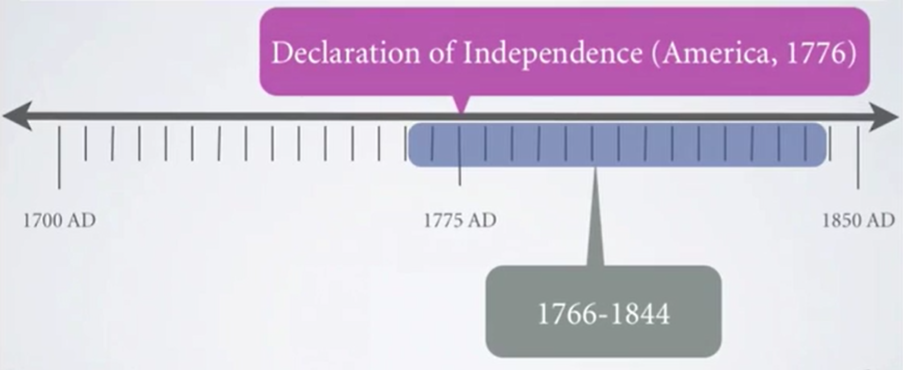
You may have noticed that the artistic movements and periods discussed in these tutorials seem to emerge and pass on in a rhythmic sort of fashion. Generally speaking, the artistic styles of the time move from logical and rational at their foundation to emotional and dramatic.
It’s not wholly accurate to say that these movements are completely defined as one or the other—it simply isn’t that cut and dry, and there is definitely crossover and inter-categorical influence. However, if you had to place each of these artistic movements in a particular group, for simplicity’s sake, it might look something like this:
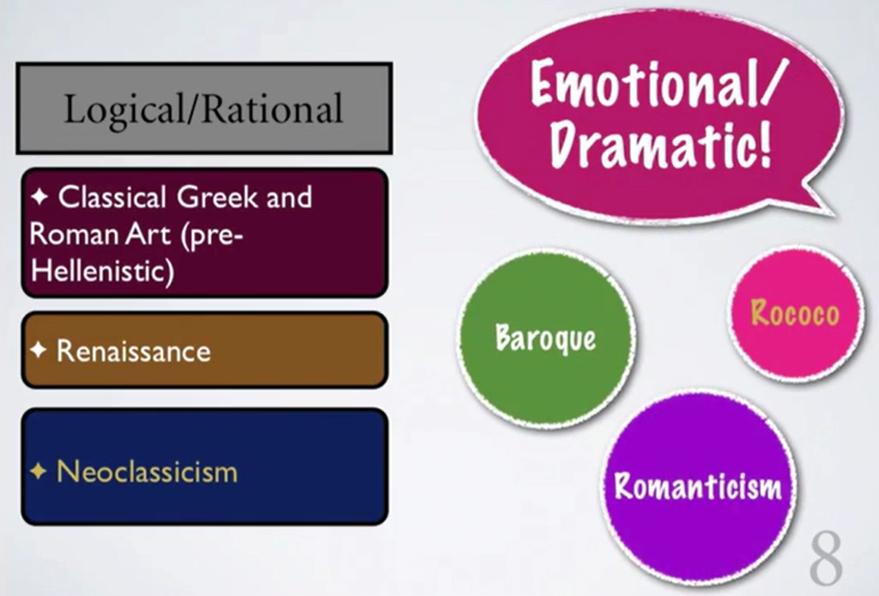
In the logical and rational category, you’d have classical Greek and Roman art, the Renaissance, and Neoclassicism. In the emotional and dramatic category, you’d have the Baroque, Rococo, and Romanticism, which will be explored in later lessons.
Neoclassicism, or “new classicism,” was a major movement in Western civilization in the 18th and 19th centuries, particularly in the arts and architecture. It drew inspiration and influence from the classical works of ancient Greece and Rome. Although it sounds like the Renaissance in this respect, Neoclassicism coincided with major intellectual movements in the sciences and philosophy that looked at scientific reason and logic as opposed to superstition to guide humanity.
The philosophical branch of thought called Empiricism centers around the belief that knowledge comes from sensed experience, rather than divine providence or an innate understanding. The discovery of empirical evidence, or evidence through experiment and observation, is the most fundamental idea of science. Now, the thinking at this period was highly influenced by the empiricists and philosophes of this time and before.
Noted Empiricists include Isaac Newton and Rene Descartes, shown below. Both men were intellectuals who acquired knowledge through the process of observation and experimentation. Newton, through his simple observation of an apple falling, helped create an entire branch of physical science related to gravity and its properties.
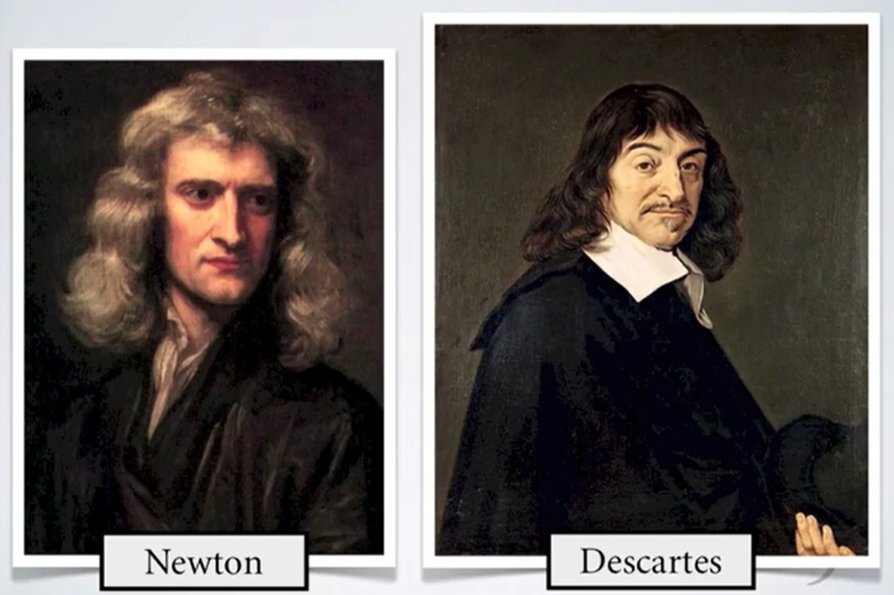
The philosophes Jean Rousseau and Voltaire, shown below, may have had their disagreements, but they were both very important influences behind social reform and government change. Rousseau’s book The Social Contract is often cited as an important catalyst that led to the French Revolution. Voltaire’s beliefs in the separation of church and state, freedom of speech, and freedom of religion were important Enlightenment ideas that made their way directly or indirectly into the United States Constitution.
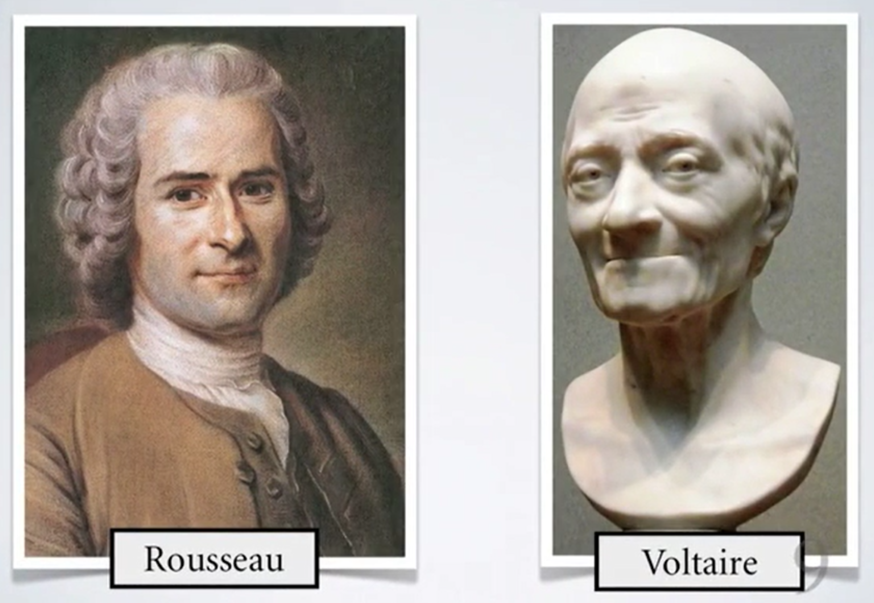
Neoclassicism drew inspiration and influence from a number of sources during this period.
In a way, science became the religion of the time. It could be seen as the inspiration behind works of art in much the same way Christian religion had been in the themes of Baroque art. Looking at the painting below, at first glance this recalls the work of Caravaggisti artists such as Georges de La Tour, who used a single light source to illuminate his paintings and identify the focus of the artwork. The influence of Caravaggio and his use of strong contrast is apparent, but notice how the figures have virtually none of the emotion and drama that you see in Baroque works of art. Rather, their poses appear frozen, which is much more indicative of Classical or Renaissance works of art.
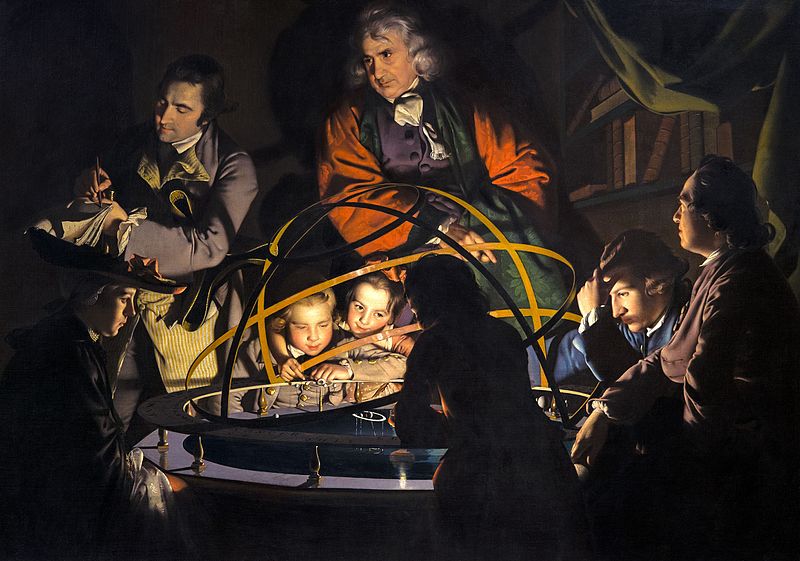
1766
Oil on canvas
Now, what is drawing their attention? Well, it’s a scientific instrument known as an “orrery,” a physical model that is used to describe the relative orbits and positions of celestial objects such as the planets and moons of the solar system. Once again, it recalls religious imagery such as the nativity scene of Georges de La Tour, shown below, but science—not the infant Jesus—is now the object of reverence.
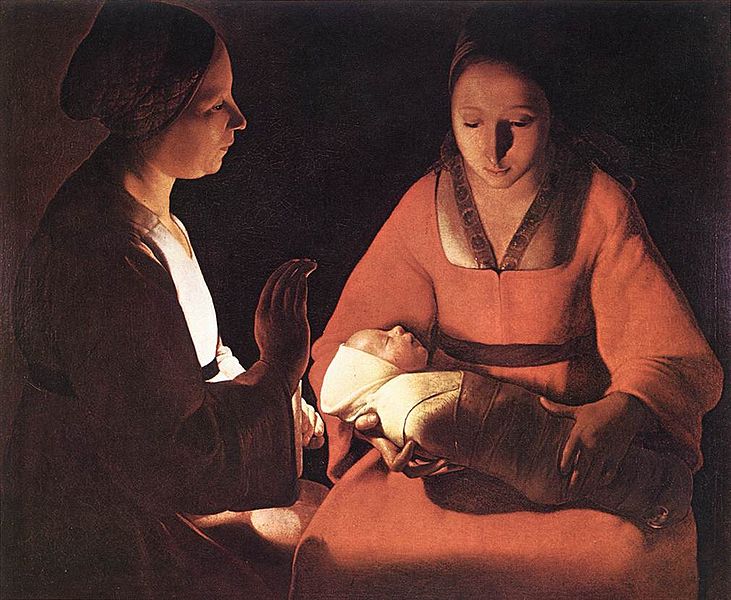
1645-1648
Oil on canvas
If the ideas of classical Greece and Rome influenced the thinking of the time, the stylistic characteristics of classical Greece and Rome influenced the aesthetic. Artistically, Neoclassicism was a response to the Rococo and the excesses of the aristocracy, yet the influence of Classicists and art historians such as Johann Winckelmann can’t be overlooked. Winckelmann believed that the work of classical Greece and Rome served as the gold standard by which all other work was compared.
Like in Classical works of art, political and social virtues were often personified in the themes of the artwork of the time. The artist Jacques-Louis David’s work is considered to be quintessentially Neoclassical in its execution. The tight and rational composition coupled with the classically modeled forms in this next example recall the work of Raphael. In this scene, the Greek philosopher Socrates is heroically portrayed and contrasted against his mourning and grieving entourage, including the elderly figure of Plato seated at the end of the bed.
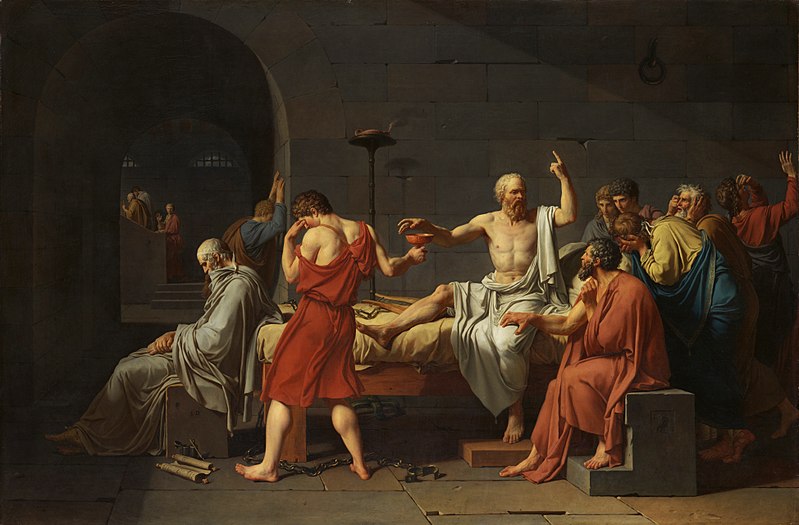
1787
Oil on canvas
Having been unjustly convicted and sentenced to die, Socrates sits erect and confidently reaches for his cup of poison while gesturing with his other hand. Notice how all the figures, including the elderly Socrates, are idealized versions of men. Most older men do not necessarily have the fit figure represented by Socrates in this painting!
While the influence of Classical ideals is fundamental to Neoclassicism, there are also the interests of the natural, as influenced by the work of Rousseau and his idea of a natural man as uncorrupted by society. This was an idea that was not appreciated by his contemporary and, at times, rival, Voltaire. Nevertheless, it influenced the Neoclassical design aesthetic, which was essentially Classical. This idea can be seen in this portrait bust of George Washington, by the American sculptor Hiram Powers.
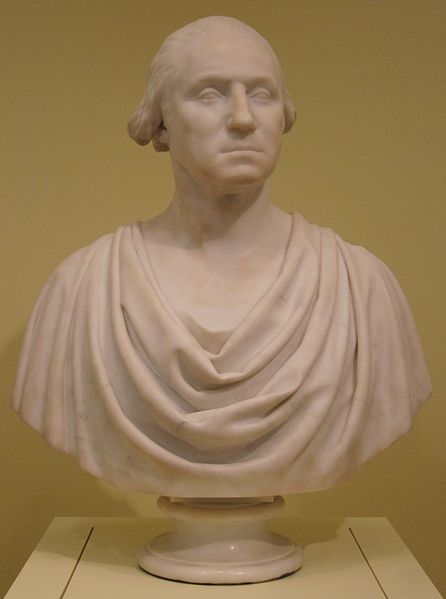
1844
Marble
The sculpture recalls the Roman veristic portraits that prized the realistic depiction of individuals as indicative of age and experience. His confident posture and realistic appearance suggest wisdom and leadership more than youth and athleticism—the kind of admirable qualities that come from a lifetime of dedication and service to the people.
Source: This work is adapted from Sophia author Ian McConnell.